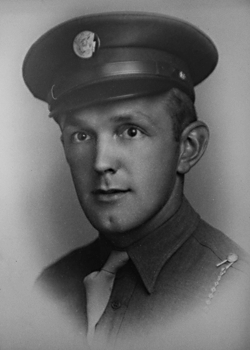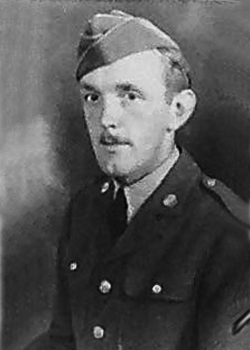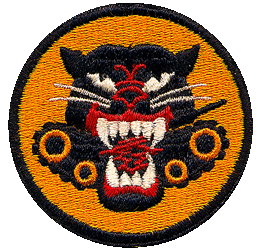 Raymond C. Stukey
Raymond C. Stukey
Biography: Raymond Chris Stukey was born on January 30, 1918, in Rome, New York. He was one of seven children born to Christian Stukey and Marie Weissmuller. He attended Waterville Public Schools, graduating in 1935. Ray worked as a clerk but also joined the New York National Guard and served in Troop “K” of the Calvary, which was later federalized as the 101st Anti-tank battalion.
Service Time: While the unit was stationed at Fort Benning, Georgia, the 101st was redesignated as the 801st Tank Destroyer Battalion and transferred to Camp Sutton, North Carolina, from January to September of 1941. They moved to Camp Hood, Texas, for additional training and were used as school soldiers to help train other men arriving at the new TD facilities.
During this time, 200 soldiers from the unit were chosen to take part in Officers Candidate Training. Ray was one of these men and on March 4, 1943, he was commissioned as a Second Lieutenant as part of the 20th Officer Candidate Class. He initially served as a platoon leader in the 129th TD Training Battalion and later on the battalion staff as mess officer, supply officer and finally as commanding officer of the HQ (Headquarters) Company and HQ Detachment. He had been promoted to First Lieutenant in January of 1944.
Promotion to First Lieutenant – Article
In December of 1944, Ray shipped overseas, arriving in Liverpool, England, on the 8th. He was assigned to Second Platoon, Company C, of the 809th Tank Destroyer Battalion. On February 27, 1945,the unit was in Holland and Ray was wounded and received the Purple Heart. He was not seriously injured and was able to return to service. On April 10, 1945, the unit was attached to the CCA of the 8th Armored Division and fighting in the Ruhr Pocket of Germany. A tank destroyer under Ray’s command was hit by enemy artillery fire. Lt. Ray Stukey dismounted his vehicle and went to aid the driver of the damaged TD. After moving the soldier over 100 yards and giving him aid, Ray was hit by a 88mm shell fragment which cut off the base of his spine. When medical personnel arrived, he directed them to help the driver before he would allow them to give him aid.
 While being evacuated, Ray and Several other wounded men were being moved by jeep toward the American lines. Snipers fired a number of shots at the jeep, which ran up an embankment, dumping out all of the already injured personnel, including Ray. Before they were finally rescued, Ray was shot five times, including his head, arm, abdomen and twice in the chest. He was conscious through the entire ordeal.
While being evacuated, Ray and Several other wounded men were being moved by jeep toward the American lines. Snipers fired a number of shots at the jeep, which ran up an embankment, dumping out all of the already injured personnel, including Ray. Before they were finally rescued, Ray was shot five times, including his head, arm, abdomen and twice in the chest. He was conscious through the entire ordeal.
Ray spent many days in Fletcher General Hospital, in Cambridge, Ohio. He was discharged on March 23, 1947, from Tilton General Hospital at Fort Dix, New Jersey, at the rank of Captain. For his actions on that day in April, he was awarded the Silver Star and an Oak Leaf Cluster to his original Purple Heart.
Western Union – Seriously Wounded Message
Ray’s wounds had left him 100% disabled but that didn’t not stop him from living a productive life. His left side was paralyzed but he landed a job at Griffiss Air Force Base, New York, in the transportation section. He was responsible for moving the household effects of military personnel on and off the base. With the almost constant changes in personnel, his job was never ending.
Job at Griffiss AFB – Article
He made his residence in Stittsville, New York, and was a member of the American Legion, VFW and Retired Officers Association. In his spare time, Ray enjoyed collecting antiques. He passed away on October 20, 1977, and was buried in Stittsville.
Some time after Ray’s death, the family was contacted by Basil A. Olivo. Basil was the TD driver that Ray had rescued the day he was so severely injured. Basil had written to the family expressing his appreciation for what Ray had done and his sorrow that he was gone.
I want to thank Ray’s neice, Heidi, for providing the information and photos of her uncle for this tribute.
It is interesting to note that Heidi’s father Edwin, Ray’s younger brother, met his future wife while visiting Ray in the Hospital. Heidi’s father was then stationed with the Army Air Corps in Kansas and came to visit Ray while on leave. Edwin met Ray’s nurse, Audrey Baylander and after Edwin’s second visit to the hospital, a month later, the two got married on a whim. They were married for almost 55 years, until he passed away in 2000.
